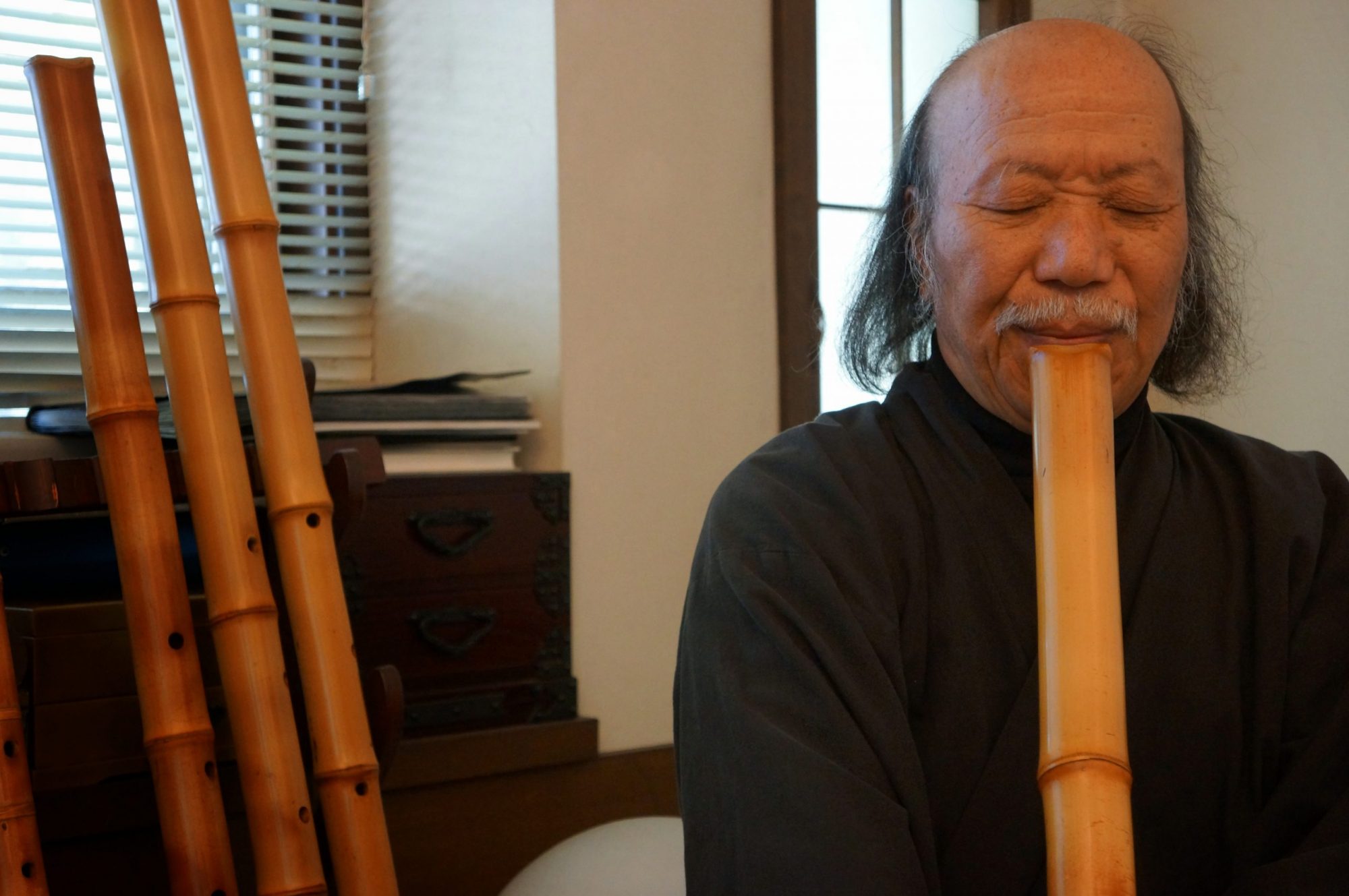

Outline of the classic jinashi nobekan shakuhachi and hotchiku
「地無し延べ管尺八」とは、管の中を砥の粉等の地(じ)を塗って加工し調律した現代の尺八とは異なり、竹の節をくりぬいて孔(あな)を開けたままの、自然に近い、竹本来の響きを活かした尺八のことです。
‘Jinashi nobekan shakuhachi’ is made by gouging out the bamboo stalk and simply creating some holes in the bamboo. Unlike the contemporary shakuhachi, which are manufactured by putting multiple layers of ji-paste inside the bore and then finely tuning the instrument. Jinashi nobekan shakuhachi makes a use of the natural sound of the bamboo itself.
(Nobekan is a shakuhachi in one piece of bamboo in contrast
to modern shakuhachi that has been cut into two attachable halves)
The attraction of classical shakuhachi is surely the solo repertoire or ‘ shirabe’ [pieces], which originates from the Edo period (1603-1867).
In the shakuhachi vocabulary these pieces are named ‘honkyoku’.
Today the word ‘shirabe’ means a piece of music. However, honkyoku is not music.
Playing honkyoku is called ‘suizen’ (blowing Zen). Suizen is cosidered equivalent to the fundamental priciples of ‘zazen’ (Zen meditation) such as focusing of the mind-albeit in the case of suizen the main tool is the breath. Firstly, the breath is treated as “Ki ” (essence, energy, spirit). And by blowing the breath into the bamboo, the flow of “Ki ” transforms into sound. In ‘honkyoku’ the sound is considered an expression of “Ki “.
“Ki ” is the source of all creations.
In other words, the sound of the bamboo summarises the whole of the natural world including all creations.
The shakuhachi, mostly heard today, are musical instruments, which makes ensemble playing possible.
The Edo period came to an end in 1867 and Japan opened up to the rest of the world after a seclusion period. During the Meiji period (1867-1912) Western music entered Japan, and the impact of this meeting between Western and Japnese music influenced the construction of the shakuhachi. The jinashi shakuhachi used during the Edo period were modified into musical instruments.
The bamboo was cut into two attachable parts and the bore is rebuilt with ‘ji ‘-a paste consisting of polishing powder and ‘urushi ‘[Japanese lacquer], which enables control of timbre and tuning.
Ichimaru Sadakichi from the mid-Meiji period is credited for this invention.
Due to these changes,the shakuhachi now has more volume, equal timbre in all of notes, which enables it to be used for ‘sankyoku’ (ensemble consisting of ‘shamisen’ [3-stringed long neck lute],koto [13-string zither] and shakuhachi), min’yo (Japanese folk song) and genres such as jazz and popular music.
The classical shakuhachi, which is a jinashi nobekan, is believed to be a tool with which one can express the dharma (truth or law of the universe) of Buddhism.
And hotchiku is considered to be the use of the bamboo as a tool of dharma.
(Translated by Kiku Day)
